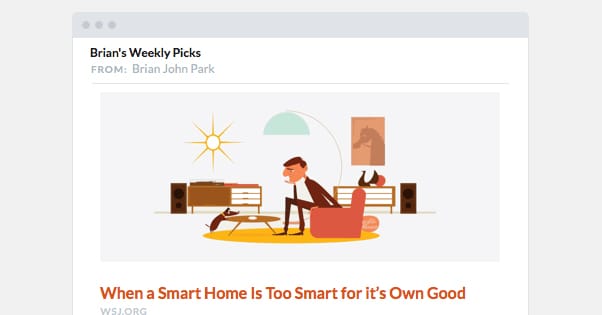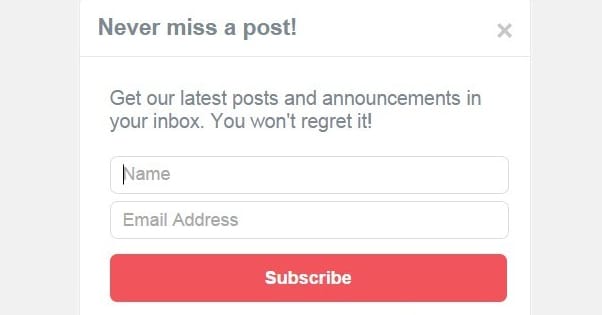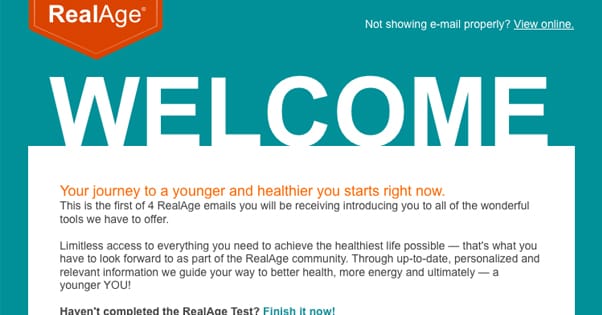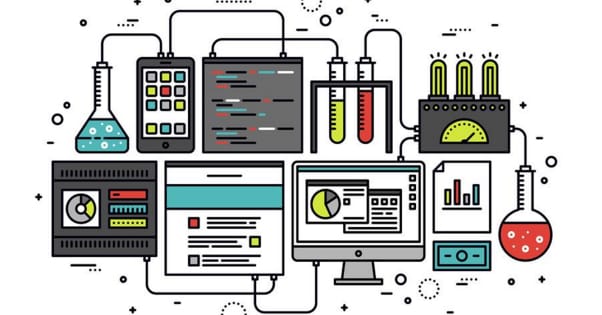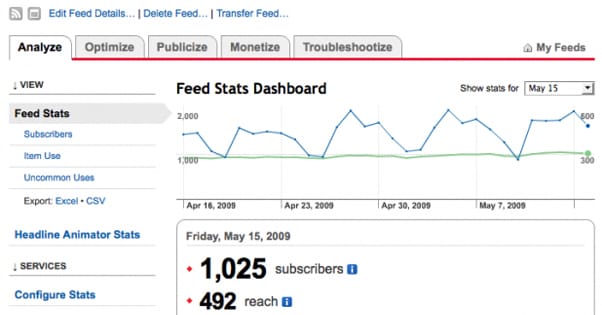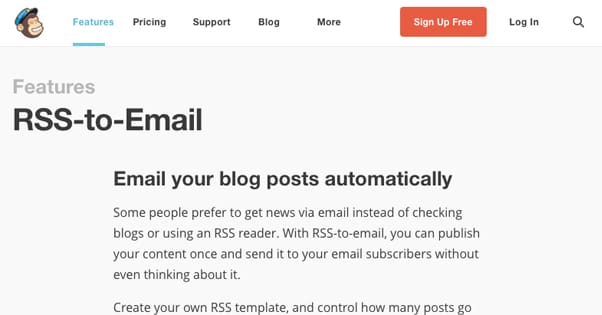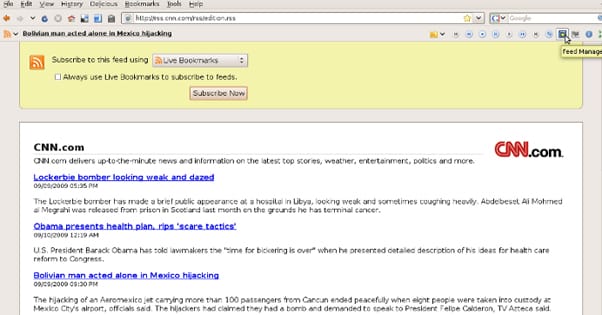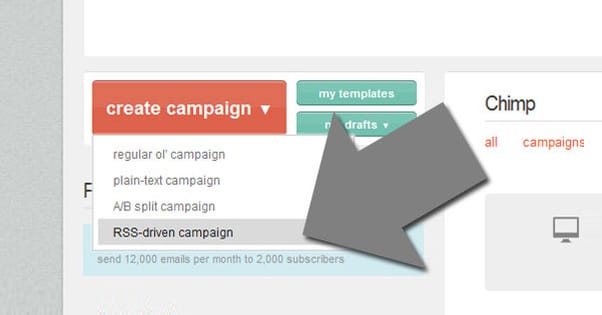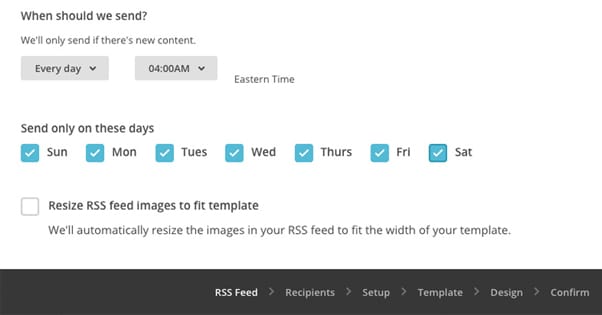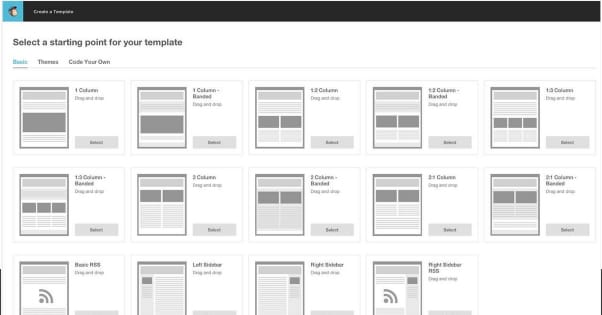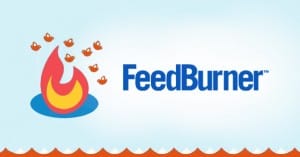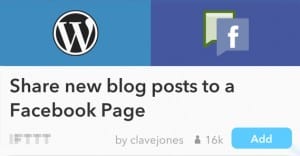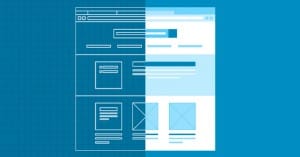Create an Automatic Email Newsletter from Your Blog Posts
Published by Drew Hendricks • Resources • Posted July 17, 2016 ContentPowered.com
ContentPowered.com
There are many rules in the world of blogging, whether you have a business that includes a blog, or you blog as a business.
Making sure you guest post effectively is one of them.
Another is to create compelling content within your niche, because, well, you really should be doing that.
The third — always, always, always include a subscribe form your website.
The last and final rule on this little list — create a newsletter.
I’ll break down the different elements needed to actually send out that automatic email newsletter, and why you should always include your blog posts as a separate newsletter itself, below.
First, a couple pre-reqs.
You Must Subscribe
You really must have a subscription button your website.
Believe in that idea, because it’s not only at the core of any solid newsletter or email-based marketing campaign, but it’s the easiest and most direct way for a customer to tell you they’re on board.
It takes effort — sure, a small effort, but effort no less — for a reader to decide, when prompted, to enter their email address for your subscription. There’s a conscious decision to receive content from your site, related topical content, or some prize you’ve promised.
However you swing it, a subscription button allows readers to opt-in to your website, which is exactly what you’re looking for.
A subscription button also happens to be pretty necessary when developing a newsletter, unless you have a huge list of emails from another source, or physical mailing addresses. Barring those two circumstances (which typically only larger organizations have), you’ll need the subscription button, and you’ll need to follow that up with a newsletter.
Your Newsletter(s)
While I preached the subscribe button pretty hard up there, it’s a bit of a moot point if you don’t have a newsletter.
What exactly are your subscribers receiving if you don’t email them any content?
In this context anything can be a newsletter. A welcome email, a weekly update on trends in your niche, a collection of links to other resources.
Yes, this article is about your blog posts, and we’re getting to that, but it’s important to note that the subscription button and newsletter format go hand in hand.
You’ll want to have a basic sense of your newsletter format before (or soon after) you put a subscription button your website, because when readers enter their email they do expect to see content relatively soon.
As I said above, you should and probably will have multiple newsletters.
This is an involved topic, the depths of which will be extrapolated another day, but know there are four basic newsletter types for you to consider. Remember, I am defining “newsletter” as anything you send to your subscribers via email:
- Welcome Email: Typical, easy, and the same for everyone. Always send a welcome email.
- Collection of Interesting Content: This can include your own content (including blogs), but many newsletters are actually curations of happenings within an industry. This builds reader trust and gives you an upper edge in retaining readers, even though it may support competitors.
- Sponsored products or hard sells: At some point you’ll need to sell something to your subscribers. That’s why you have them. You can build a separate newsletter for this purpose, but it’s also good to sprinkle in specific selling points into all your newsletters.
- Automatic blog post newsletter: This is a relatively easy way to frequently update your readers with your original content.
While the four types of newsletters I list above are a short list, the last is really what we’ll focus on below.
The why of it, and the how.
Creating an Automatic Email Newsletter from Blog Posts
This kind of newsletter is perfect on so many levels it’s hard to imagine why you wouldn’t be using it. The only real reason is if you blog very, very infrequently.
But that’s probably not your case — you’re a blogger, or a business that understands the value of a frequently updated blog.
An automatic email newsletter based on your blog posts is typically conducted through an RSS feed, which most blogs already have (courtesy of WordPress). In essence, every time you publish a new blog post, your subscribers will get an email with that blog post, or portions of it.
You can adjust the frequency of these emails, what the email looks like, and just about every other aspect of the delivery process.
I’ll get into the details below, but first some convincing on my end. Here are four reasons an automatic email newsletter based on your blog posts is worth the time:
1. Utilizes Content You’re Already Creating
If you’re like me you take the time to write a great blog post. You do topic research for your niche, you do keyword research to determine ranking factors, you find or create excellent photos, and you write with passion and clarity.
All of that time manifests into a blog post that can be found in search engines and shared to social media, which are two of the biggest ways to draw readers to your site and services.
By creating an automatic email newsletter you will be reusing that content you worked so hard to create, sending it automatically to your subscribers, and getting even more bang for that blog buck.
2. Saves You Time
The word automate is quite powerful.
Most of us live in a work and life environment today where time time is hard to come by. Between your morning routine, your work meetings, your actual work, that on-the-side work to pay off your vacation or boat, your meals, a social life, a romantic life, your daily walk for Pokemon Go, and sleep, it’s hard to reel in large batches of time.
If you wanted to craft a custom newsletter every week based on the blog posts you published you could, but automation makes this super easy, and it’s just as effective.
You just have to take the time to set up the automated process, which I’ll get into below. After that, don’t worry about it. Revel in your time. Take a nap, go to the gym, or you know, get back to other work.
3. Keep in Touch with Your Loyal Customers
The whole point of a subscribe button and newsletter, as I said above, is to get and keep loyal customers.
When someone subscribes to your website, they’re either doing it because they wanted a free thing you offered, or because they want to get updates on your content or services.
Both of those reasons makes them loyal customers, and email accounts are worth gold.
By automating the process of sending out your blog posts via email, you let your readers know that you’re producing content. You let them know you’re thinking about them. You give them a chance to learn something new, visit your website, and remember who you are.
4. Get Metrics
Newsletter services today are sophisticated platforms that provide a huge amount of customization and data.
By sending out automatic newsletters of your blog posts you can get a batch of data from your most loyal customers to see who reads your content, who clicks on your content after receiving the email, and who unsubscribes.
All of this will help you build a better newsletter and better content.
Some systems even allow for A/B testing, which can go a long way in refining your process.
How to Create an Automatic Email Newsletter
The above should have thoroughly convinced you to go the automatic route.
If it didn’t, scroll up and re-read the “Saves You Time” bit, because unless you have a lot of extra income and a huge staff you just won’t be able to be on top of this without automation.
The next part of this process is actually creating the automatic email newsletter from your blog posts.
The good news is that there are a number of services that do this extremely well for free.
The main service is MailChimp, which will be the basis for most of my example. Another service is AWeber, which is similar in many ways.
You can also use the WordPress plug-in MailPoet, though this will have less functionality overall. It is simple, though, so for users that want simplicity you might want to start there.
Creating an Account
MailChimp is an email marketing service (EMS), and within its services are a number of very helpful tools, one of which is this automatic newsletter.
If you haven’t already registered with an EMS, MailChimp is a great option. If you already have an EMS, make sure to check their settings to see if an automatic newsletter option is possible — it’s also called a RSS-to-Email service.
To start using a service like MailChimp, you’ll need to create an account. Typically the biggest and best EMS’ are free up to a certain number of subscribers. MailChimp’s limit is 2,000 subscribers, so if you already have a bigger list than that shop around for the best deals. Still, it’s a great service to use even if you’re paying for it.
RSS-to-Email Service
MailChimp allows you to create a ton of different kinds of email marketing campaigns.
Newsletters are just one small corner of their expertise, and the RSS-to-Email service is a very specific subsection within that field.
Once you’ve created your account, click on the Create Campaign button on your MailChimp dashboard — this is how you begin any email plan.
You’ll see “RSS-Driven” campaign as one of the options, and you’ll want to click this.
What is RSS?
A note here about RSS. It stands for “Rich Site Summary,” but is better known as “Really Simple Syndication,” which is an apt acronym because it describes exactly what it does.
Before RSS users had to visit websites they loved to see new content, or get specific emails sent out by the company.
RSS allows a user to “subscribe” (in a different way than an email subscription button) to any website, and when that website publishes content, the user will get a notification.
Some websites have complex RSS feeds with different subtopics the allow readers to only get information about a specific niche, while other websites have general RSS feeds and will ping you anytime the website publishes anything new.
An email subscription would send you emails, but an RSS feed requires an RSS Reader. A popular one is Feedly, but there are many others. This is how people generally read through an RSS feed or multiple RSS subscriptions.
As you can maybe guess from MailChimp’s title, an RSS-to-Email campaign allows you to convert the automatic nature of the RSS notification into emails. It does this seamlessly, which means your subscribers will get a custom email every time new content is published.
Enter your RSS Feed
When you start your MailChimp RSS-to-Email campaign, you’ll have to input your website and your website’s RSS Feed.
In most WordPress sites you can find the RSS Feed button at the bottom. It looks a bit like a WiFi signal — a small dot and two curving lines.
Click this and you’ll be taken to a string of code — this is what your literal RSS Feed looks like.
When you click that button you’ll see your website URL defaults to:
https://example.com/feed
You can typically find any RSS feed by typing in a URL and putting “/feed” after it.
This is what you’ll need to enter into MailChimp, which will automatically pull the content into the newsletter.
Frequency Customization
I know what you’re thinking — I don’t want my subscribers to get a new email every time I publish a post.
That’s why you’ve signed up with an EMS that has options.
After creating your MailChimp RSS-to-Email campaigns and entering the RSS feed itself, you’ll get to customize the frequency of your emails.
You can set the emails to daily, weekly, every other week, once a month, or some custom repeating pattern.
This directly corresponds with how much you’re publishing.
If you put up one blog post a week, you’ll probably want to send out a newsletter every other week, or every few weeks.
You want the newsletter to contain more than a single blog post so that it’s useful to readers.
On the flip side, you want to make sure that if you publish multiple blog articles a week you get each of them in a newsletter. Perhaps weekly or bi-weekly is right for you.
It’s all about your content production.
Format Customization
After deciding frequency you’ll have the option to design the newsletter you’re sending out.
MailChimp shines here with pre-fab templates, make-your-own templates, a drag and drop editor, and a visual preview.
The combination of these tools will make it so your newsletter can look unique and in-line with your website.
You can spend a lot of time making a custom newsletter, then save the preferences so that every blog post newsletter is highly stylized. Or, you can use the pre-made templates and get it set up extremely quickly.
Wrapping Up Your Newsletter
As with any piece of high-powered tech, MailChimp and other EMS’ will allow you to do more than I’ve described above. You can create a very focused and powerful automated newsletter, pulling images, text, and anything you want to attract readers.
However, this entire process is built on the RSS Feed, and the reality is that some websites don’t come readymade with an RSS Feed.
If that’s your case, use Feedity to create one. This is a site that allows you to add RSS functionality your website.
You should be all set to reach out to your loyal customers with impeccably timed updates, allowing you to grow your business with almost no effort.
